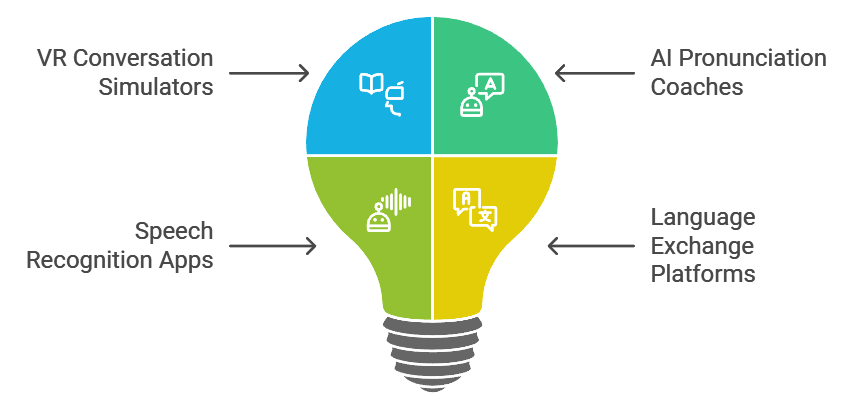How to Become Fluent in French: Proven Strategies and Expert Insights
Becoming fluent in French requires a smart mix of modern learning methods, consistent practice, and cultural immersion. The journey to French fluency typically takes 6-8 months of dedicated study, though this varies based on your starting level and learning intensity.
Key Takeaways
- Combine traditional learning with AI-powered tools for faster progress
- Focus on daily immersion rather than long, irregular study sessions
- Master regional variations to communicate effectively across French-speaking countries
- Use neuroscience-backed learning techniques for better retention
- Track progress through standardized tests and self-assessment tools
The Science of French Language Learning
The brain processes language learning in unique ways. Recent neuroscience research shows that combining multiple learning methods activates different brain regions, leading to better retention and faster fluency.
Effective Learning Techniques:
- Study in 25-minute focused sessions
- Review material at increasing intervals
- Practice active recall through speaking
- Connect new words with familiar concepts
Memory Enhancement Methods
Modern memory techniques specifically designed for language learning can dramatically improve your retention rate. The key is to create meaningful connections between new French words and concepts you already know.
| Traditional Method | Modern Approach | Effectiveness Rate |
|---|---|---|
| Rote Memorization | Spaced Repetition | 80% |
| Word Lists | Story-based Learning | 75% |
| Grammar Drills | Immersive Practice | 85% |
| Textbook Study | AI-assisted Learning | 90% |
Digital Immersion Strategies
Technology has revolutionized French language learning. Virtual reality and AI-powered tools now offer immersive experiences that were impossible just a few years ago.
Top Digital Learning Tools:
- VR conversation simulators
- AI pronunciation coaches
- Speech recognition apps
- Language exchange platforms

Professional French Development
Want to use French in your career? Focus on industry-specific vocabulary and cultural business norms. Many learners overlook the importance of business French, but it’s crucial for professional success.
Key Business French Elements:
- Industry terminology
- Email etiquette
- Meeting protocols
- Negotiation phrases
Regional French Variations
French isn’t just spoken in France. Understanding regional differences is crucial for true fluency.
| Region | Key Differences | Common Expressions |
|---|---|---|
| Quebec | Unique pronunciation, English influence | “C’est tiguidou” |
| Belgium | Different numbers, local vocabulary | “S’il vous plaît” vs “Une fois” |
| Switzerland | German influence, slower pace | “Septante” vs “Soixante-dix” |
Modern French Culture Integration
Stay current with French culture through social media and entertainment. This helps you understand modern expressions and cultural references.
Contemporary Learning Sources:
- French YouTube channels
- Social media influencers
- Podcasts
- Streaming services
Progress Tracking
How do you know you’re improving? Use a combination of standardized tests and self-assessment tools.
Assessment Methods:
- DELF/DALF official exams
- Regular speaking recordings
- Vocabulary tracking apps
- Conversation partner feedback
Technology-Enhanced Practice
Modern language learning apps use artificial intelligence to adapt to your learning style and pace. They can identify patterns in your mistakes and provide targeted practice.
Smart Learning Features:
- Personalized lesson plans
- Error pattern recognition
- Adaptive difficulty levels
- Progress analytics
Implementation Strategy
Success in French fluency requires a structured approach. Here’s a practical weekly plan:
| Day | Focus Area | Time Investment |
|---|---|---|
| Monday | Grammar & Writing | 1 hour |
| Tuesday | Speaking Practice | 45 minutes |
| Wednesday | Cultural Study | 1 hour |
| Thursday | Business French | 45 minutes |
| Friday | Immersion Activities | 1 hour |
| Weekend | Free Practice | 2 hours |
Remember, consistency matters more than perfection. Start with small, manageable goals and gradually increase your study intensity. Use a mix of traditional and modern methods, and don’t forget to immerse yourself in French culture whenever possible.
The path to French fluency is unique for everyone, but following these science-backed strategies while leveraging modern technology will help you achieve your language goals more efficiently. Keep track of your progress, stay motivated through varied learning activities, and most importantly, make the learning process enjoyable.
Have you started your French learning journey yet? Begin with one small step today, and you’ll be surprised at how quickly you can progress with the right approach and tools.
